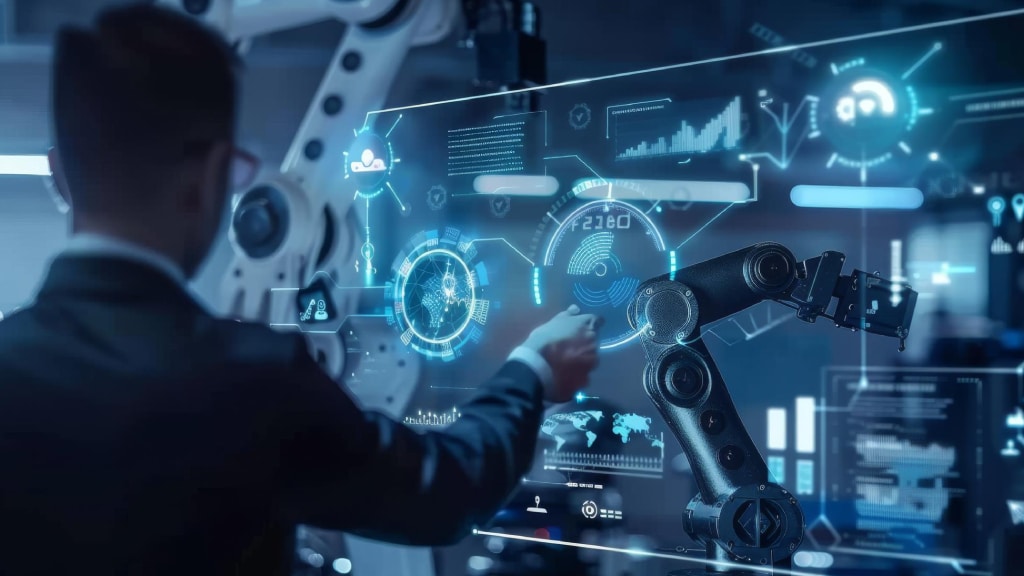How Machine Learning Has Changed The Game
Optical Character Recognition (OCR) has been a cornerstone in the evolution of the manufacturing industry over the last 10 years. It has transformed back-of-house processes by changing the way documents are managed. However, a new advancement, OCR with Machine Learning (ML), is taking document management to an entirely new level. Here’s a comparison of traditional OCR and OCR enhanced with Machine Learning, focusing on their capabilities in handling unstructured documents and the overall impact on the manufacturing sector. Additionally, we’ll explore the benefits of outsourcing OCR with ML needs to specialized companies versus handling it in-house.
Traditional OCR in Manufacturing: The Basics
Functionality:
Traditional OCR technology converts printed or handwritten text within scanned documents and images into machine-readable text. It’s highly effective for digitizing large volumes of documents, making them easy to store, search, and retrieve.
Applications in Manufacturing:
- Document Digitization: Automates the process of converting paper documents into digital format.
- Data Entry: Reduces manual data entry errors and speeds up data processing.
- Inventory Management: Scans and digitizes inventory logs, invoices, and shipping documents.
Handling Unstructured Documents:
Traditional OCR in manufacturing struggles with unstructured documents—those without a consistent format, such as emails, notes, and complex forms. It requires predefined templates and manual adjustments, which can be time-consuming and error-prone. The accuracy and efficiency of traditional OCR decline significantly when faced with varied layouts and formats.
Limitations:
While traditional OCR in manufacturing is powerful, it has limitations in recognizing text from documents with complex layouts, varied fonts, or poor-quality scans. It also requires manual configuration and adjustment to improve accuracy, which can be less flexible and more labor-intensive.
OCR with Machine Learning: The Next Level
Enhanced Functionality:
OCR with Machine Learning builds on traditional OCR by incorporating algorithms that learn and improve over time. This technology uses neural networks and pattern recognition to understand and interpret complex document layouts and diverse fonts more accurately.
Applications in Manufacturing:
- Intelligent Data Extraction: Automatically extracts relevant information from complex documents such as blueprints, quality reports, and contracts, with minimal human intervention.
- Engineering Drawing and Blueprint Data Extraction: Precisely interprets and digitizes engineering drawings and blueprints, ensuring accurate data extraction from intricate technical documents.
- Adaptive Learning: Continuously improves accuracy by learning from corrections and new data inputs, making it more efficient over time.
- Automated Workflows: Integrates with other ML applications to automate workflows such as predictive maintenance scheduling, supply chain optimization, and real-time inventory management.
Handling Unstructured Documents:
OCR with Machine Learning excels at handling unstructured documents. It uses advanced algorithms to recognize patterns and context, allowing it to extract meaningful information from varied and inconsistent formats. Unlike traditional OCR in manufacturing, ML-enhanced OCR can adapt to new document types without extensive reprogramming, making it more versatile and accurate in processing unstructured data.
Advantages Over Traditional OCR:
- Higher Accuracy: Significantly improves text recognition accuracy, even in challenging scenarios like varied fonts, noisy backgrounds, and handwritten notes.
- Adaptability: Adapts to new document types and formats without extensive reprogramming.
- Contextual Understanding: Understands context to accurately extract and categorize data, enhancing decision-making processes.
Impact on the Manufacturing Industry
Efficiency and Productivity:
OCR with ML vastly improves efficiency by reducing the need for manual corrections and adjustments. This means quicker data processing, faster retrieval times, and a significant reduction in errors, leading to higher productivity levels.
Scalability:
As manufacturing operations scale, the volume and variety of documents increase. OCR with ML scales effortlessly, handling larger datasets and more complex documents without a drop in performance.
Cost Savings:
While the initial investment in OCR with ML may be higher, the long-term cost savings from reduced manual labor, fewer errors, and enhanced productivity justify the expenditure. Manufacturers can reallocate resources to more strategic tasks, further driving innovation and growth.
Regulatory Compliance:
OCR with ML enhances compliance efforts by ensuring that all documents are accurately digitized, stored, and easily retrievable for audits. Its ability to learn and adapt ensures that it keeps up with changing regulations and standards.
Outsourcing OCR with Machine Learning: The Benefits
Expertise and Advanced Technology:
Outsourcing OCR with ML needs to a specialized company brings in expertise and the latest technology. These companies are at the forefront of advancements in ML and OCR, ensuring that you benefit from the most efficient and accurate solutions available.
Cost-Effectiveness:
Setting up an in-house OCR with ML system involves significant upfront costs, including software, hardware, and skilled personnel. Outsourcing eliminates these initial investments and converts them into predictable operational expenses. This can be more cost-effective, especially for small to medium-sized manufacturers.
Focus on Core Competencies:
By outsourcing OCR with ML, manufacturers can focus on their core competencies rather than diverting resources to manage complex IT projects. This allows for better allocation of time and effort towards production, quality control, and innovation.
Scalability and Flexibility:
Specialized OCR companies can scale their services according to your needs, offering flexibility that is hard to achieve with an in-house setup. Whether you need to process more documents during peak seasons or handle new document types, outsourced solutions can quickly adapt to these changes.
Continuous Improvement:
Outsourcing partners are continuously updating and improving their systems. They incorporate the latest advancements in ML and OCR technology, ensuring that you always have access to cutting-edge solutions without the need for additional investments.
Why iTech is the Perfect Partner for OCR with Machine Learning
iTech has revolutionized OCR in manufacturing by pairing it with machine learning. We partner with manufacturers to seamlessly handle both straightforward and complex data capture tasks. This leads to unparalleled quality, faster turnaround times, and substantial operational and labor cost savings. Whether it’s invoices, POs, SOs, blueprint and engineering drawings, or unique data capture needs, iTech delivers the most cost-efficient and optimal solutions, making it the ideal partner for any manufacturing company looking to leverage the benefits of OCR with Machine Learning.
While cost savings is always a driver for manufacturers, it’s the speed and quality of information that drives the decisions that make them profitable. To find out how iTech can show you measurable results that will allow you to realize both contact us.




